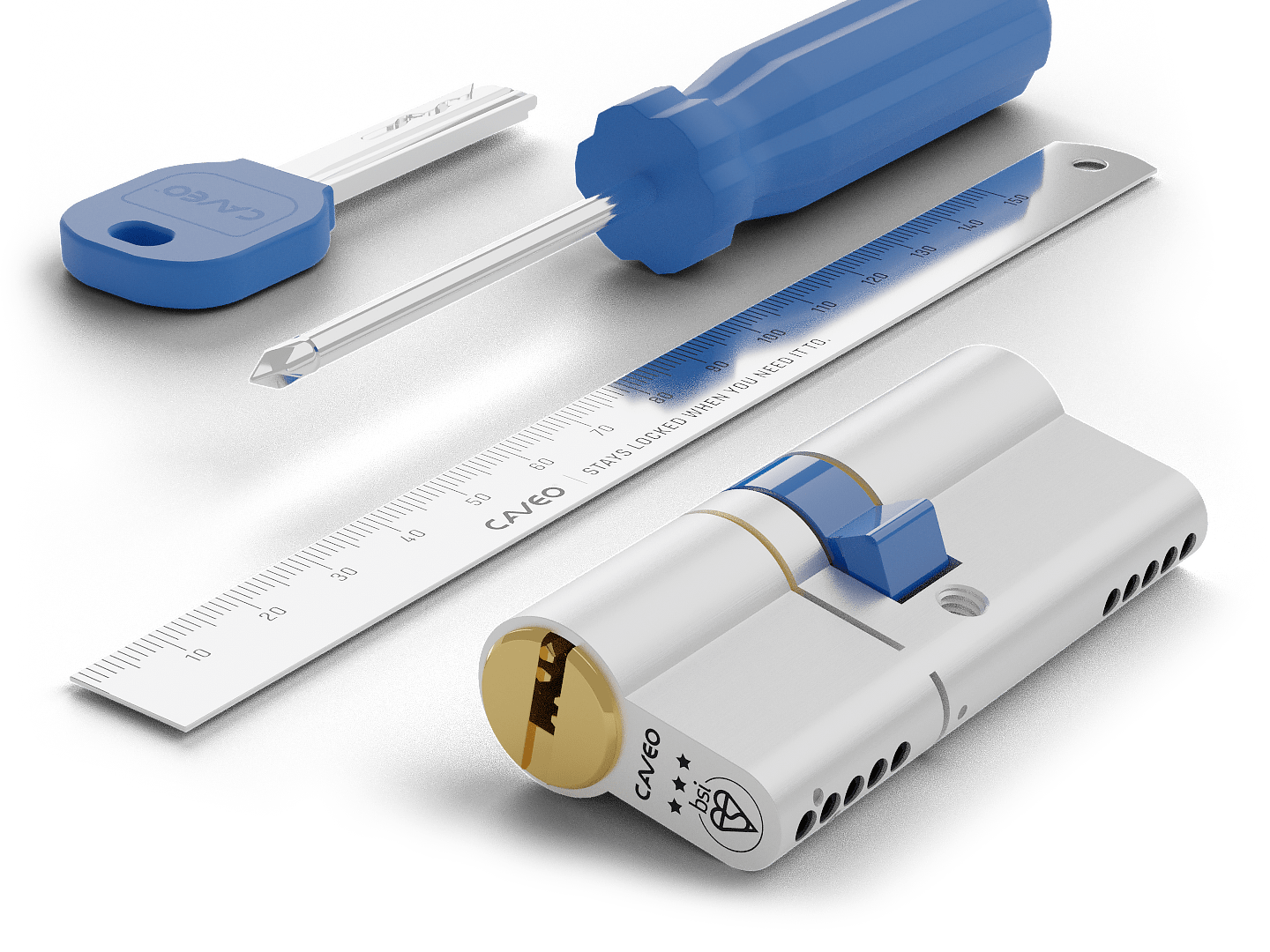INSTALLATION
We want to make it as easy as possible to measure and install your own Euro Cylinder Locks. That’s why we have created our detailed guides.

We want to make it as easy as possible to measure and install your own Euro Cylinder Locks. That’s why we have created our detailed guides.

Euro cylinders come in two main types. Euro key & turn cylinder locks have a key hole on the outside and a thumbturn on the inside. Euro double cylinder locks have a key hole on each side. Note which type you require.

To measure your cylinder lock, open your door and locate the cylinder retaining screw, which is inline with the cylinder lock.
Note: For some types of lock additional screws and a faceplate may need to be removed in order to access the cylinder retaining screw.

Measure from the centre of the cylinder retaining screw to the face of the door furniture on each side. Take note of which measurement is for the external side.
In this example:
EXTERNAL: 35mm
INTERNAL: 35mm
OVERALL: 70mm

When taking your cylinder measurements always measure as accurately to the face of your door furniture as possible to attain a flush fit.
This will ensure maximum security against snapping attacks.
With these measurements you can now purchase your replacement lock. Look for a CAVEO 3 Star Snap Secure Dimple Euro Cylinder for maximum door protection.

Remove the cylinder retaining screw using a screwdriver.

In order to remove the cylinder lock you will need to line up the cylinder cam with the cylinder body.
Insert your key & turn the cam approximately 30° in both directions, pull lightly whilst doing so to remove the cylinder lock.
For Euro Key & Turn locks this can be done with the thumbturn instead of a key.

Line up the cam with the lock body and pull out the cylinder lock.

Line up the cam with the lock body and insert the new cylinder lock.

Replace the cylinder retaining screw using a screwdriver.

The lock must be lubricated every 3 months with Asec Mighty Lube or similar to maintain guarantee & warranty.
Insert the straw nozzle just slightly into the keyway, apply a small amount of lubricant. Wipe off any excess with a cloth or paper tissue.
Insert the key and retract it several times to allow the lubricant to penetrate the working parts.
An alternative is to lubricate the key and then insert the key and retract it several times to allow the lubricant to penetrate the working parts.